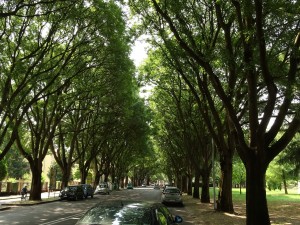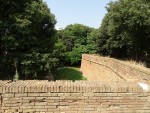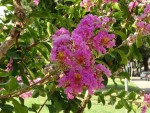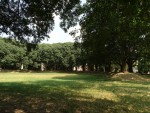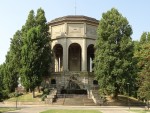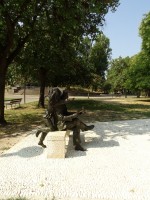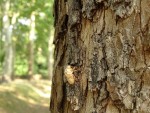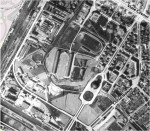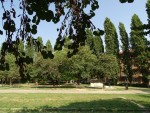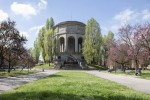Giardino District
The Giardino District is a large residential zone in the south-east area of the old town. It contains a monument to the Po River and comprises the docks on the Po of Volano.
Giardino Disctrict
When entering Ferrara from the west, either by train or from the Ferrara-nord motorway exit, you will be welcomed by wide tree-lined boulevards: this is the beginning of the Giardino District.
History
This district was built in the large empty space created in 1859 by the demolition of the papal fortress, an imposing star-shaped stronghold located near the south-west walls. The fortress was built to reassert the sovereignty of the Papal States, which had regained full possession of the city in the late 16th century. The construction resulted in the demolition of many works of the Este era, and was not popular with the locals, as it was a symbol of oppression. The fall of the Papal States allowed it to be demolished.
In the early 20th century, a petition requested the redevelopment of this large empty space, used for various events. In 1911, the municipality appointed engineer Ciro Contini to develop an urban plan, which involved a large garden in the heart of the new district. The plan was not popular, however, and was replaced with another which allowed for the disorderly construction of many private houses and social housing. In 1924 Contini received a new appointment, but the area had already been turned upside down by the existing construction. Between 1927 and 1932, with the supervision of engineers the Savonuzzi brothers, the city stadium, elementary schools, city water tower with monumental fountain dedicated to the Po river, the fire station and more social housing. Bombed during the Second World War, construction resumed after the war. The monuments, large boulevards of hackberry, plane, poplar and lime trees, and public spaces with thick hedgerows remained.
The Current Redevelopment
In recent years, the Giardino District has once again been at the centre of an ambitious urban planning project, designed to increase the amount of green space, highlighting the connection between the city's old centre and the docks on the Po of Volano with ecological corridors. This redevelopment should have broad ecosystemic effects, touching on both environmental and social aspects. The green connections should act as urban heat islands, solving some of the water management problems linked to impermeable ground. At the same time the work, which has already partially begun, aims to give inhabitants back an habitual relationship with their city's river and promote social integration. A practical example is the “Adottiamo un’aiuola” (adopt a flower bed) project created by a group of citizens from the Associazione Comitato Zona Stadio association who live in the Giardino District. It came about in 2016 thanks to the contribution of the Associazione Anolf associaton and a network of local sponsors (Boarini Garden, Ipercoop, Coop. Serena, TPER Ferrara, Gianni De Ronche), with the involvement of the Poledrelli di Ferrara elementary school and the Ferrara ASP, technical support from the Ufficio Verde (“green office”), Ferrara tua and the municipality’s Urban Center. The second edition in 2017/2018 saw expansion of the project and involvement of the Scuola Bombonati school and Nido Giardino nursery school. The goal of "Adottiamo un’aiuola" is to let children get to know the area of the city where they live, and get them involved in the creation and maintenance of a huge flower bed in the Giordano Bruno Park.
The success of SPAL, a city football team which has returned to Serie A, has led to modifications and expansion of the stadium: these modifications have prevented the consumption of terrain which a new stadium would have led to.
Fototeca
Related Subjects
Related places
Compiling entity
- Museo Civico di Storia Naturale di Ferrara

